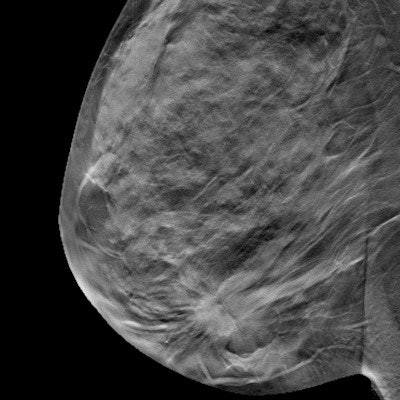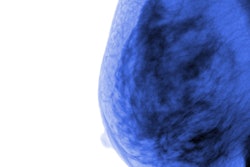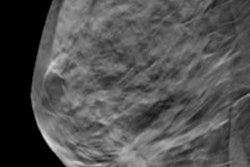
Breast cancer screening with digital breast tomosynthesis (DBT) benefits women over 65, with fewer false positives and no statistically significant difference in sensitivity or cancer detection rate, according to a new study published online April 2 in Radiology.
 Dr. Manisha Bahl.
Dr. Manisha Bahl.The study could support the expansion of screening to older women under guidelines that would focus less on a woman's age and more on how healthy she is along with her screening preferences, wrote a team led by Dr. Manisha Bahl of Massachusetts General Hospital in Boston.
"In our study evaluating the performance of screening mammography in women aged 65 years and older, we found that integration of digital breast tomosynthesis led to improved screening performance metrics, with a lower abnormal interpretation rate, higher positive predictive value, and higher specificity," the group wrote. "Because the benefits of early cancer detection are maintained and the potential risks of false-positive examinations are lower with DBT in older women, our study supports guidelines recommending that screening decisions be based on individual preferences and health status rather than age alone."
Lack of consensus
No consensus currently exists among professional organizations about how long women should continue to be screened, Bahl and colleagues noted. The U.S. Preventive Services Task Force (USPSTF) recommends women undergo screening mammography from the age of 50 until the age of 74, and states that there's insufficient evidence for screening in women 75 and older (it recommends women under 50 consult their physicians about when to start screening). But other groups don't have recommendations based on ages beyond 74.
The American Cancer Society (ACS), for example, suggests that women continue screening until their life expectancy is less than 10 years; the American College of Radiology (ACR) suggests that screening recommendations should be based on factors such as a woman's life expectancy, other diseases, and whether she would seek treatment if a cancer was found.
Bahl and colleagues sought to compare the performance of DBT to conventional 2D digital mammography among women 65 and older. They included 30,529 2D screening mammograms from more than 15,000 women (mean age, 72.7 years) and 41,429 DBT screening mammograms from more than 20,000 women (mean age, 72.1 years).
The team found that both 2D and DBT mammography were effective at detecting cancer in this older population, but tomosynthesis had some advantages, such as a lower false-positive rate, a higher positive predictive value (PPV), and higher specificity.
| 2D vs. DBT mammography screening in women 65 and older | |||
| Performance measure | Digital mammography | DBT mammography | p-value |
| Cancer detection rate per 1,000 exams | 6.9 | 8.2 | 0.23 |
| Recall rate | 5.8% | 5.7% | < 0.001 |
| PPV | 11.9% | 14.5% | 0.03 |
| Sensitivity | 88.3% | 90.9% | 0.39 |
| Specificity | 94.8% | 95.1% | < 0.001 |
| False-positive rate | 5.1% | 4.8% | < 0.001 |
The researchers hope the study findings will inform breast cancer screening guidelines, Bahl told AuntMinnie.com.
"3D mammography performs well in this population," she said. "If a woman is fairly healthy and would want to be treated, it makes sense to continue regular breast cancer screening, especially with DBT."
Good news?
The study tackles a particular conundrum regarding breast cancer: Women in their 40s and 50s have much to gain in terms of longevity from early detection and treatment of breast cancer compared with women in their 70s and 80s -- but breast cancer incidence increases with age, wrote Dr. Liane Philpotts and Dr. Melissa Durand, both of Yale University, in an accompanying editorial.
"The recommended age to start and stop mammographic screening is controversial, partly due to a lack of studies that specifically assess women in different age groups ... as well as the shifting balance of harms and benefits at various ages," they explained. "With mammography screening, as with many other aspects of medicine, one size may not fit all. The study by Bahl and colleagues ... addresses some of these important considerations ... [finding] that digital breast tomosynthesis improved screening performance metrics while maintaining cancer detection rate."
This improved performance means finding cancer earlier -- a distinct benefit among older women, according to Philpotts and Durand.
"Finding fewer cancers that have spread to lymph nodes translates to better prognosis and less aggressive treatment, an important consideration for older women," they wrote. "Because aggressive treatment may be impractical or cause considerable morbidity or mortality in an older woman, the detection of lower-stage disease is an important benefit."



















